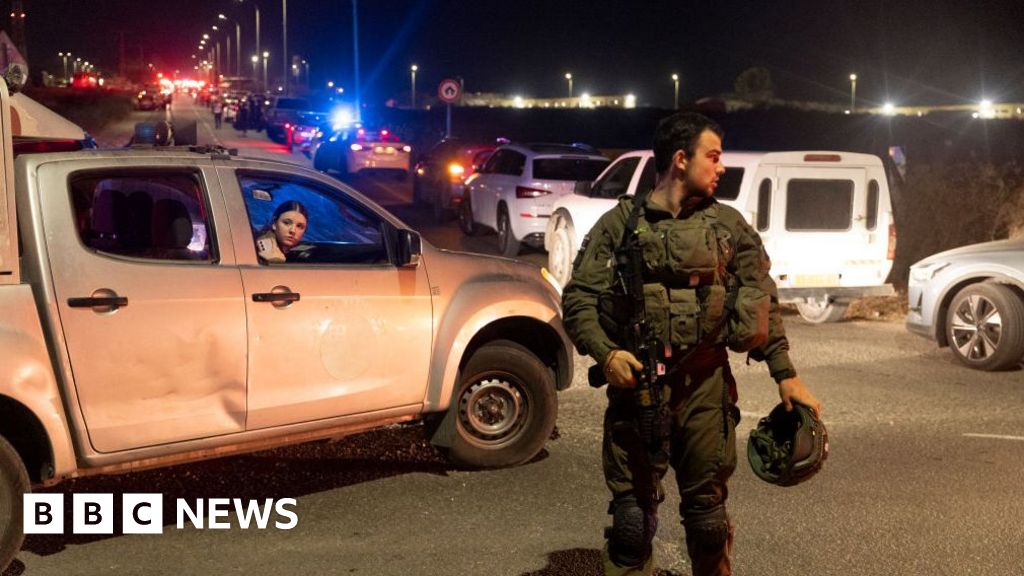Some parts of the air defence system work well. Here in northern Israel we hear booms at regular intervals as Iron Dome intercept rockets that Hezbollah fires from southern Lebanon. Israel says it hits more than 90% of its targets.
But Iron Dome works because Hezbollah’s rockets are crude – and it’s possible to calculate where it’s rockets will go at take-off and then intercept them.
Stopping drones is more complicated. And has in this war become a recurring problem.
In July a drone fired by Yemen’s Houthis reached Tel Aviv. Earlier in October the Israel Defense Forces (IDF) said a drone launched from Iraq killed two soldiers in the Golan Heights. Just last week another drone hit a nursing home in central Israel.
“Most, if not all, of the drones are manufactured by the Iranians and then supplied to the armed groups in Lebanon, Iraq and Yemen,” Dr Yehoshua Kalisky, senior researcher of the Institute of National Security Studies in Tel Aviv, told the BBC.
Drones have a small radar signature and can fly at low altitudes which makes early detection difficult. They can even occasionally be confused for birds.
“They’re also difficult to intercept with aircraft because the UAV’s (drones) fly slowly,” Dr Kalisky explained. “They’re going about 200km/h (124mph) compared to 900km/h (559mph) of a jet plane.”

